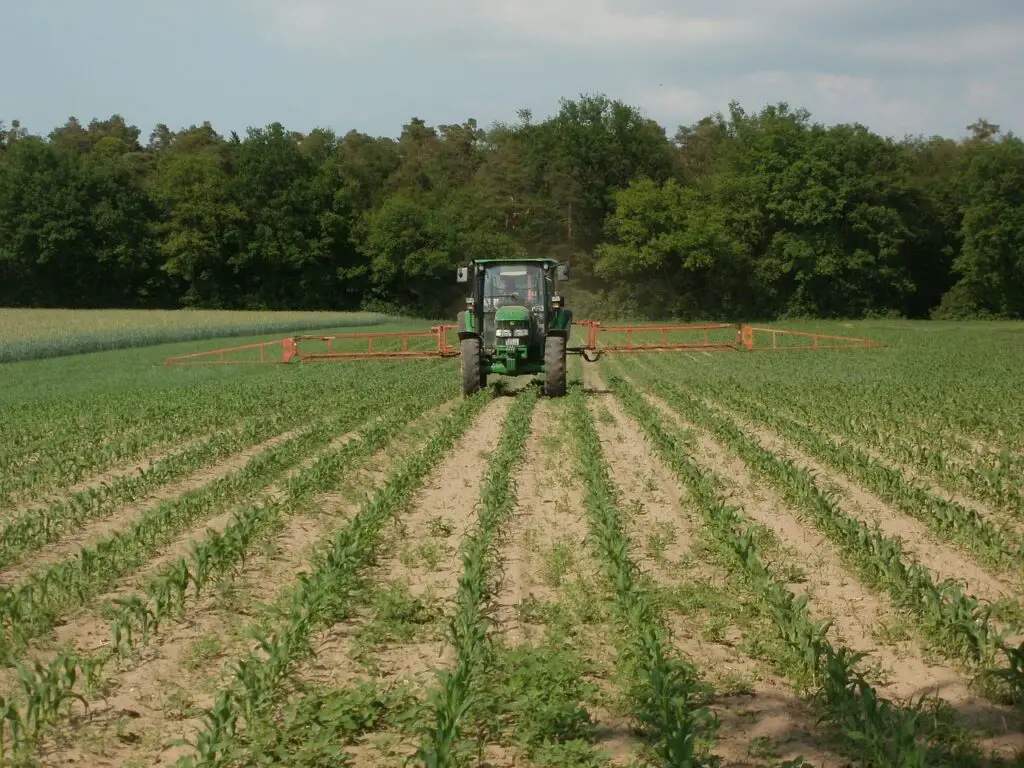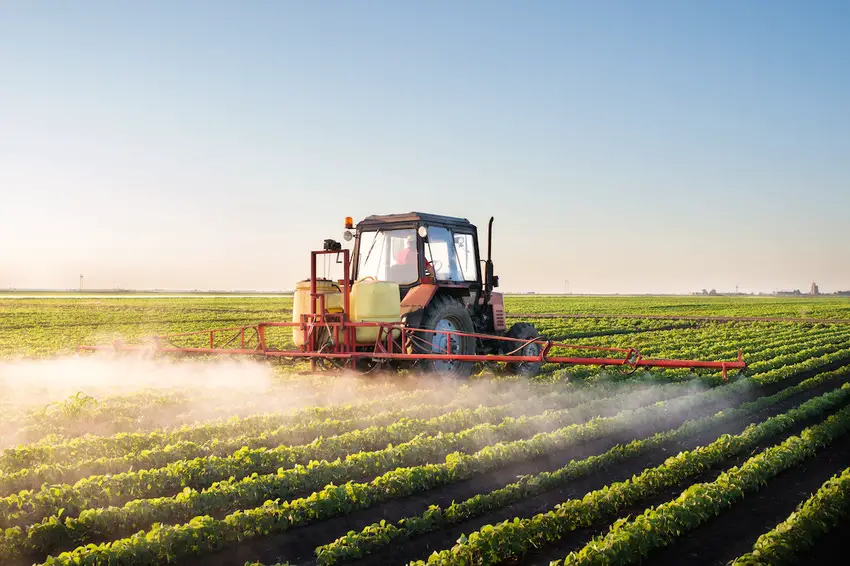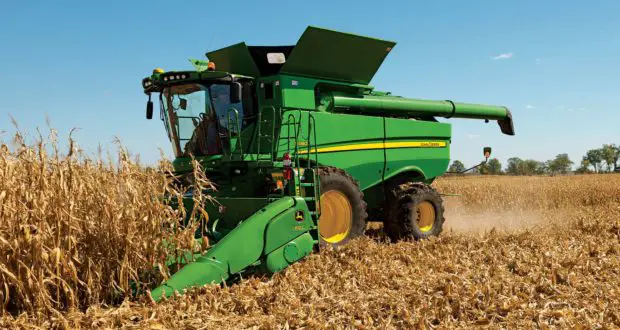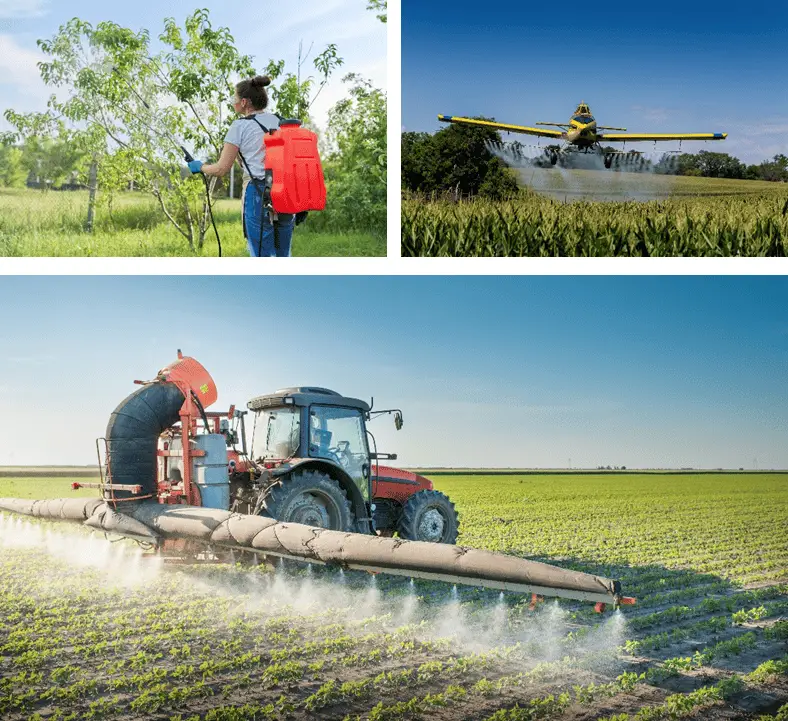This post may contain affiliate links which means I may receive a commission for purchases made through links. Learn more on my Private Policy page.
If you’re a farmer looking to optimize the performance of your farm machinery, you may find yourself pondering the question: “How do I properly calibrate my farm machinery?” Calibrating farm machinery is an essential task that ensures accurate measurements and efficient operations. In this article, we will explore the importance of calibration, provide step-by-step guidance, and offer some valuable tips to help you achieve optimal results in your farming endeavors. So, let’s get started on the journey to precision and productivity!
Choosing the Right Calibration Method
Understanding the Importance of Calibration
Calibrating farm machinery is an essential step in ensuring optimal performance and efficiency. It involves adjusting equipment settings to achieve accurate results, such as seed spacing, spray coverage, fertilizer application rate, and bale density. Proper calibration is crucial as it ensures consistent and uniform output, reduces wastage, maximizes yield, and minimizes potential environmental impacts. By calibrating your farm machinery, you can have confidence in the precision and reliability of your operations.
Different Calibration Methods
There are various methods available for calibrating different types of farm machinery. The choice of calibration method depends on the specific equipment and its intended use. Some common calibration methods include:
-
Gravity Drop Method: This method is commonly used for calibrating seeders and planters. It involves collecting seeds or fertilizer dropped by the equipment for a set distance or time and calculating the rate of application.
-
Catch and Weigh Method: This method is suitable for calibrating sprayers and fertilizer spreaders. It involves catching the output of the equipment in a container and weighing it to determine the application rate.
-
Yield Measurement Method: This method is used for calibrating harvesters. It involves measuring the weight of harvested crops in a specific area to determine the harvester’s efficiency.
-
Bale Weighing Method: This method is specifically designed for calibrating hay balers. It involves weighing the bales produced by the baler to ensure they meet the desired weight and density.
Each calibration method has its advantages and limitations. It is important to choose the method that best suits your equipment and the goals you want to achieve.
Considering Factors for Calibration Method Selection
When selecting a calibration method, there are several factors to consider:
-
Equipment Type: Different farm machinery requires different calibration methods. Consider the type of equipment you have, such as seeders, sprayers, harvesters, or balers, and choose a calibration method that aligns with their specifications.
-
Accuracy Requirements: The level of precision you need will influence the choice of calibration method. Some applications, like precision planting or pesticide applications, require higher degrees of accuracy.
-
Resources and Tools Availability: Consider the resources and tools you have access to. Some calibration methods may require specialized equipment or assistance from experts.
-
Time and Efficiency: Evaluate the time and effort required for each calibration method. Choose a method that is practical and efficient for your farm’s operations.
By taking these factors into account, you can select the most suitable calibration method for your farm machinery.
Pre-Calibration Preparation
Checking Equipment Conditions
Before starting the calibration process, it is essential to inspect your farm machinery for any damages or malfunctions. Carefully examine the key components of the equipment, such as seed meters, sprayer nozzles, spreader outlets, harvester blades, or hay baler mechanisms. Look for signs of wear and tear, blockages, or any other issues that may affect the performance or accuracy of the equipment during the calibration process. Address any necessary repairs or replacements before proceeding with calibration.
Gathering Essential Tools
To perform an effective calibration, you will need certain tools depending on the type of machinery being calibrated. Some common tools include measuring tapes or rulers, weighing scales, collection containers, pressure gauges, wrenches, and screwdrivers. Ensure all the necessary tools are readily available before starting the calibration process. Having the right tools on hand will make the process smoother and more efficient.
Reviewing Manufacturer Guidelines
Manufacturers often provide specific guidelines for calibrating their farm machinery. These guidelines may include step-by-step instructions, recommended calibration methods, and equipment settings. It is important to carefully review the manufacturer’s guidelines before proceeding with calibration. Following these guidelines ensures that you calibrate your equipment in accordance with the manufacturer’s recommendations, which can help maintain warranty coverage and maximize the equipment’s performance.

This image is property of d27p2a3djqwgnt.cloudfront.net.
Calibrating Seeders and Planters
Inspecting Seed Metering System
Before calibrating seeders and planters, it is crucial to inspect the seed metering system. Check for any damages or blockages in the seed hopper, metering units, and seed tubes. Clean out any debris or foreign particles that may interfere with proper seed flow. Ensure the seed metering system is in good working condition before calibration.
Determining Seed Spacing and Depth
To achieve accurate seed placement, it is important to determine the desired seed spacing and depth for your crops. Refer to seed charts or crop-specific recommendations to identify the optimal spacing and depth. Adjust the equipment settings accordingly to match the desired parameters.
Adjusting Seeders and Planters for Accurate Calibration
Once you have determined the appropriate seed spacing and depth, it is time to calibrate the seeders and planters. Follow the chosen calibration method, such as the gravity drop method or catch and weigh method, to set the application rate accurately. Make adjustments to the equipment settings, such as seed metering units or ground speed, to achieve the desired calibration results. Continuously monitor and fine-tune the calibration as needed.
Calibrating Sprayers
Checking Sprayer Components
Before calibrating sprayers, thoroughly inspect the key components to ensure they are in optimal condition. Check the sprayer tank for any leaks or damages. Examine the spray nozzles for clogs or wear. Inspect the pressure regulators, filters, and valves for any malfunctions. Address any issues found during the inspection to ensure accurate calibration.
Determining Proper Nozzle Size and Pressure
For precise spray coverage, it is important to determine the proper nozzle size and pressure settings for your specific application. Consider the target crop, desired droplet size, and spray volume requirements. Consult the nozzle manufacturer’s recommendations or seek expert advice to select the most appropriate nozzle size and pressure settings for your sprayer.
Conducting Calibration Test
Once the sprayer is prepared and the nozzle size and pressure settings are optimized, it is time to conduct a calibration test. Choose an appropriate calibration method, such as the catch and weigh method, to determine the application rate. Select an area with known dimensions and spray water into the containers for a set period. Weigh the collected water to calculate the application rate. Make necessary adjustments to the sprayer settings based on the calibration test results to achieve accurate application rates.

This image is property of eu-images.contentstack.com.
Calibrating Fertilizer Spreaders
Inspecting Spreader Components
Before calibrating fertilizer spreaders, inspect the key components of the equipment. Check the spreader hopper for any damages or blockages. Examine the spreader outlets, vanes, and fan units for wear and tear. Clean out any debris or fertilizer buildup that may affect the spreader’s performance. Ensure the spreader components are in good condition.
Determining Spreader Settings
To achieve accurate fertilizer application, it is important to determine the appropriate spreader settings. Consider the fertilizer type, desired application rate, and spread pattern requirements. Refer to the spreader manufacturer’s guidelines or seek expert advice to select the optimal settings for your specific fertilizer spreader.
Performing Calibration Test for Accuracy
After determining the spreader settings, it is essential to perform a calibration test to verify the accuracy of the application rate. Choose a suitable calibration method, such as the catch and weigh method, to measure the spreader’s output. Spread fertilizer over a known area and collect it in containers. Weigh the collected fertilizer to calculate the application rate. Adjust the spreader settings as needed based on the calibration test results to ensure accurate fertilizer application.
Calibrating Harvesters
Inspecting Harvesting Components
Before calibrating harvesters, inspect the key components of the equipment. Check the harvesting blades, conveyors, and other moving parts for any damages or malfunctions. Ensure that the harvester is clean and free from debris that may interfere with its performance. Address any necessary repairs or maintenance tasks before proceeding with calibration.
Adjusting Harvester Settings
To optimize the efficiency and accuracy of harvesters, it is important to adjust the settings to match the crop conditions and harvesting goals. Consider the crop species, maturity stage, and desired harvesting accuracy. Refer to the harvester manufacturer’s guidelines or consult experts to determine the appropriate settings for your specific harvester.
Conducting Yield Measurement for Calibration
To calibrate harvesters accurately, it is necessary to measure the yield or harvested crop weight. Choose a representative area or sample several areas to determine the actual yield. Weigh the harvested crop and compare it with the harvester’s yield monitor or counter readings. Make necessary adjustments to the harvester settings based on the yield measurement results to achieve accurate calibration.

This image is property of brewerint.com.
Calibrating Hay Balers
Checking Baler Components
Before calibrating hay balers, inspect the key components of the equipment. Check the baling chamber, belts, and knots for any damages or malfunctions. Examine the tensioning systems and bale density controls. Ensure that the baler mechanism is clean and properly lubricated. Address any necessary repairs or maintenance tasks before proceeding with calibration.
Determining Bale Size and Density
To achieve the desired bale size and density, it is important to determine the suitable settings for your specific hay baler. Consider the type and moisture content of the hay, storage requirements, and transportation limitations. Refer to the baler manufacturer’s guidelines or seek expert advice to select the optimal settings for your hay baler.
Performing Bale Weighing and Measurement
To calibrate hay balers accurately, it is necessary to weigh and measure the produced bales. Weigh a representative sample of bales using a weighing scale. Measure the dimensions of the bales, such as length, width, and height. Compare the actual measurements and weights with the baler’s settings and specifications. Make necessary adjustments to the baler settings based on the calibration results to achieve the desired bale size and density.
Fine-Tuning Calibration Results
Analyzing Calibration Data
After calibrating farm machinery, it is important to analyze the calibration data to identify any discrepancies or areas for improvement. Compare the actual application rates, spread patterns, yields, or bale measurements with the target values or specifications. Look for any variations or inconsistencies that may indicate the need for further adjustments.
Making Adjustments for Optimal Performance
Based on the analysis of calibration data, make necessary adjustments to the equipment settings or operational practices. Fine-tune the seeding rate, spray nozzle configurations, spreader settings, harvester adjustments, or baler mechanisms to achieve optimal performance and accuracy. Consult the manufacturer’s guidelines or seek expert advice to ensure that the adjustments are made correctly.
Re-calibrating as Needed
Calibration is not a one-time process. It is important to regularly revisit the calibration of your farm machinery to account for changing crops, equipment wear, or evolving operational requirements. Monitor the performance of your equipment and be prepared to re-calibrate as needed. Regular calibration ensures that your farm machinery continues to operate at its best and delivers accurate results.

This image is property of www.farmmanagement.pro.
Maintenance and Recordkeeping
Regular Equipment Maintenance
In addition to calibration, regular maintenance of farm machinery is crucial for optimal performance and longevity. Follow the manufacturer’s recommended maintenance schedules and perform routine tasks such as lubrication, cleaning, and inspection. Regularly check for any signs of wear, damage, or malfunction and address them promptly. Proper maintenance helps extend the lifespan of your equipment and reduces the need for major repairs.
Documenting Calibration Records
Keeping accurate calibration records is essential for quality control, operational planning, and compliance purposes. Record the details of each calibration performed, including the date, equipment settings, calibration method used, calibration results, and any adjustments made. Maintain a logbook or digital recordkeeping system to store and organize your calibration records for future reference. These records can also be valuable for troubleshooting, equipment upgrades, or when seeking assistance from experts.
Implementing Preventive Maintenance Program
To ensure the overall reliability and performance of your farm machinery, consider implementing a preventive maintenance program. This program should include a comprehensive schedule of maintenance tasks, such as filter replacements, lubrication, sensor calibrations, and component inspections. Regularly review and update the preventive maintenance program to align with changing operational requirements or equipment recommendations. A proactive approach to maintenance can help prevent costly breakdowns, reduce downtime, and maximize the lifespan of your farm machinery.
Seeking Professional Assistance
Knowing When to Consult Experts
While calibration is a task that can often be performed by farmers themselves, there may be situations where it is beneficial to seek professional assistance. Complex calibration procedures, specialized equipment requirements, or the need for expert insights may warrant the involvement of certified technicians or agricultural consultants. If you encounter challenges during the calibration process or if you need guidance in selecting the appropriate calibration method, do not hesitate to reach out to professionals experienced in farm machinery calibration.
Collaborating with Agricultural Extension Services
Agricultural extension services can be valuable resources for farmers in various aspects of farm management, including machinery calibration. These services, often available through universities or government agencies, offer expertise and support to enhance farmers’ knowledge and skills. Agricultural extension specialists can provide guidance, training, and access to educational materials related to machinery calibration. Collaborating with agricultural extension services can broaden your understanding of calibration techniques and help you stay updated with industry best practices.
Engaging Manufacturer Support
Manufacturers of farm machinery are invested in the success of their products and often provide comprehensive support resources for equipment calibration. Reach out to the manufacturer for technical assistance, guidelines, or troubleshooting advice related to calibration. Take advantage of their expertise and familiarity with their equipment to ensure accurate calibration. Manufacturers may also offer training programs or online resources that can enhance your calibration knowledge and skills.
In conclusion, proper calibration of farm machinery is essential for achieving accurate and efficient operations. By understanding the importance of calibration, selecting the appropriate calibration method, and following the outlined processes for different types of farm machinery, you can optimize the performance of your equipment. Regular maintenance, recordkeeping, and seeking professional assistance when needed further contribute to the success of your calibration efforts. Calibration is an investment that pays off in improved productivity, reduced wastage, and better environmental stewardship, ultimately benefiting your farming operation as a whole.
This image is property of agcrops.osu.edu.
This post may contain affiliate links which means I may receive a commission for purchases made through links. Learn more on my Private Policy page.


